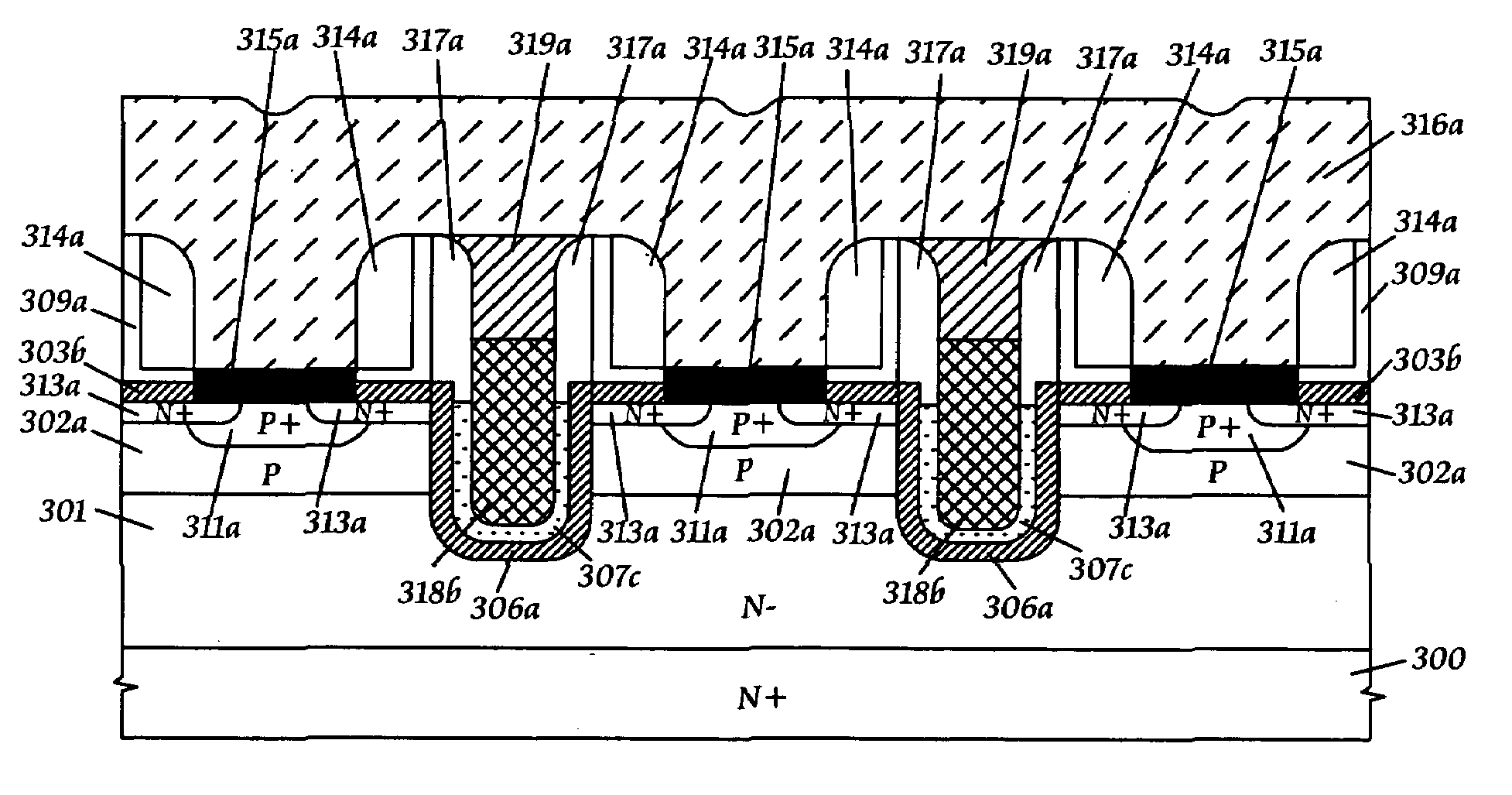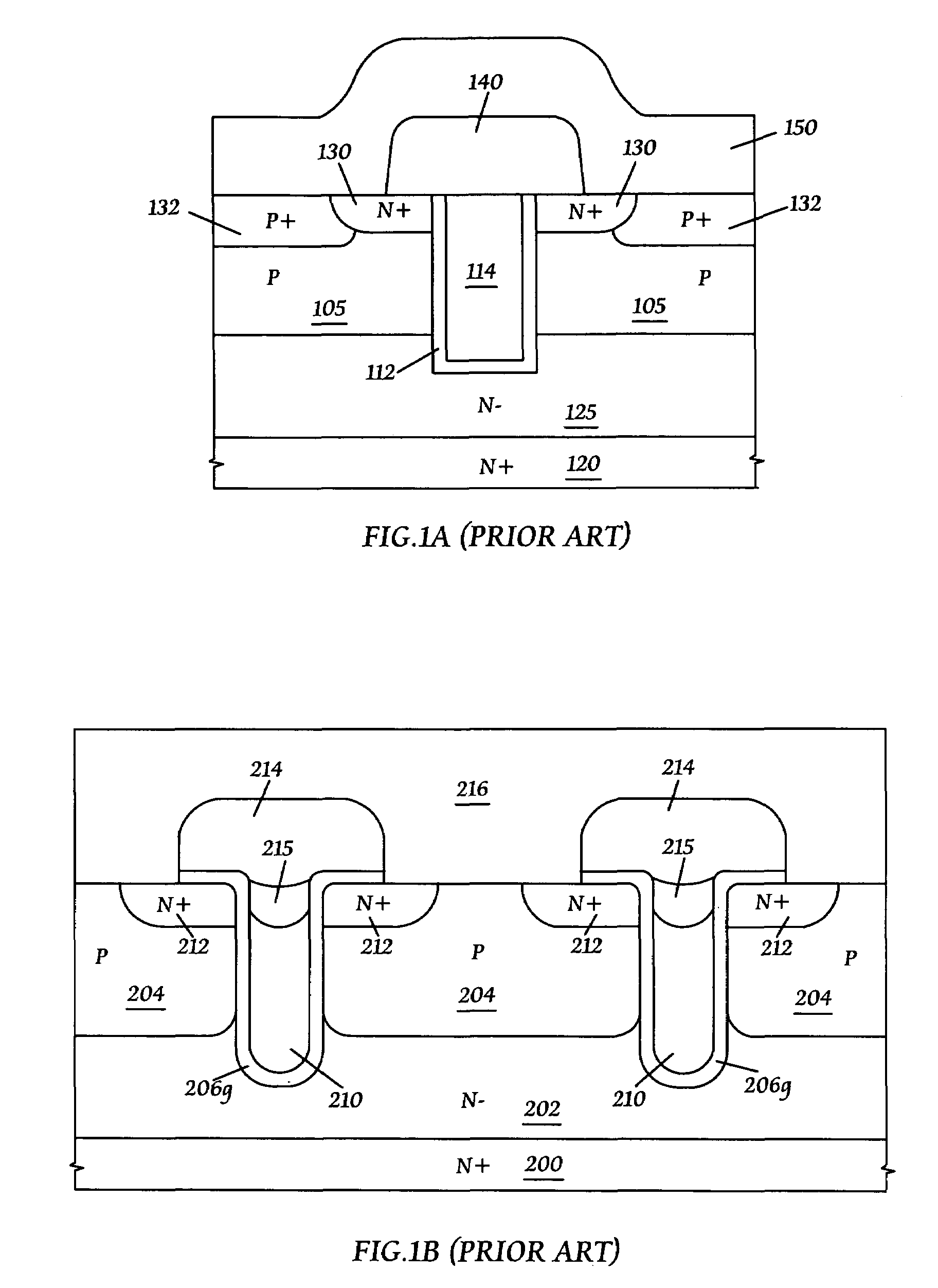Self-aligned trench DMOS transistor structure and its manufacturing methods
a self-aligned, trench-type technology, applied in the direction of basic electric elements, electrical equipment, semiconductor devices, etc., can solve the problems of slow switching speed, improve the ruggedness of trench-type dmos transistors, improve the parasitic gate-interconnection resistance, and improve source and p-base contact resistance.
- Summary
- Abstract
- Description
- Claims
- Application Information
AI Technical Summary
Benefits of technology
Problems solved by technology
Method used
Image
Examples
first embodiment
[0018]Referring now to FIG. 2A through FIG. 2J, there are shown process steps and their schematic cross-sectional views of fabricating a self-aligned trench DMOS transistor structure for the present invention.
[0019]FIG. 2A shows that a p-diffusion region 302 is formed in an epitaxial silicon substrate 301 / 300 with an N− epitaxial silicon layer 301 being formed on an N+ silicon substrate 300; a buffer oxide layer 303 is then formed on the p-diffusion region 302; and thereafter, a masking dielectic layer 304 is formed on the buffer oxide layer 303. The masking dielectric layer 304 is preferably made of silicon nitride as deposited by low pressure chemical vapor deposition (LPCVD). The buffer oxide layer 303 is preferably a thermal silicon dioxide layer or a silicon dioxide layer as deposited by LPCVD. It should be noted that the doping types shown in FIG. 2A are mainly used to fabricate trench n-channel DMOS transistors. Similarly, trench p-channel DMOS transistors can be fabricated b...
third embodiment
[0040]Referring now to FIG. 4A and FIG. 4B, there are shown simplified process steps after FIG. 3A and their cross-sectional views for fabricating the present invention.
[0041]FIG. 4A shows that the etched-back conductive layer 307b between the pair of capping oxide spacers 317a is etched-back to form a trenched conductive layer 307c; an etched-back capping conductive layer 318b is then formed to fill a gap between the pair of capping oxide spacers 317a; and subsequently, an etched-back capping oxide layer 319a is formed on the etched-back capping conductive layer 318b between the pair of capping oxide spacers 317a.
[0042]Similarly, following the same process steps as shown in FIG. 2E through FIG. 2J, the third embodiment of the present invention as shown in FIG. 4B can be easily obtained. From FIG. 4B, it is clearly seen that the trenched conductive layer 307c offers a larger volume for forming the etched-back capping conductive layer 318b to further improve the parasitic gate-inter...
PUM
 Login to View More
Login to View More Abstract
Description
Claims
Application Information
 Login to View More
Login to View More - R&D
- Intellectual Property
- Life Sciences
- Materials
- Tech Scout
- Unparalleled Data Quality
- Higher Quality Content
- 60% Fewer Hallucinations
Browse by: Latest US Patents, China's latest patents, Technical Efficacy Thesaurus, Application Domain, Technology Topic, Popular Technical Reports.
© 2025 PatSnap. All rights reserved.Legal|Privacy policy|Modern Slavery Act Transparency Statement|Sitemap|About US| Contact US: help@patsnap.com



